As Christmas approaches, the esteemed artist Daniel Mitsui sent me another print, this time of the Adoration of the Magi. Very nice!
A few details.
It was inspired by a 15th c. panel by the Master of the AH Monogram.
The Circumcision is depicted in the upper left.
There is a millefleur pattern inspired by late-Medieval tapestry.
He followed Ven. Bede’s explanation of the wisemen as representing all the races.
I’m glad he included the critters.
There are lots of great little details, such as OT foreshadowings of the Adoration by the Magi: three heroes bringing water to David, The Queen of Sheba at Solomon’s throne.
Beautiful colors. As usual the photos don’t do them justice.
This would make a great Christmas present for someone (including yourself).
Contact Mr. Mitsui HERE. Check out the other great religious art he has made.

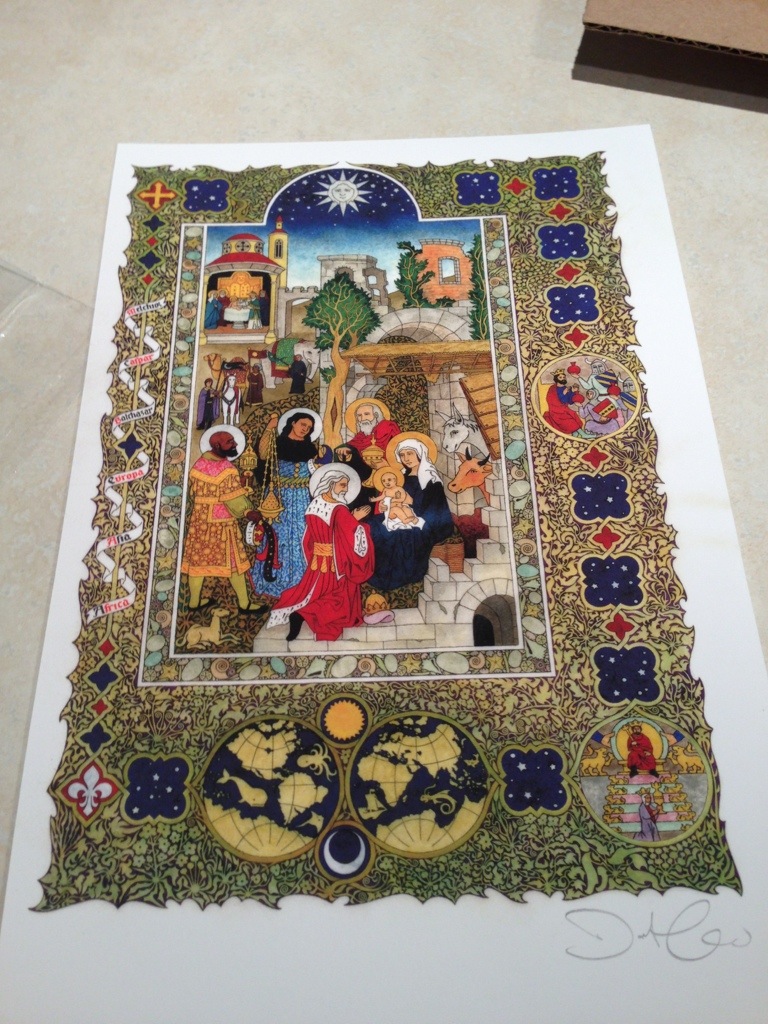
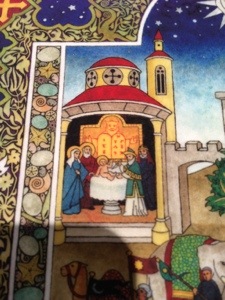
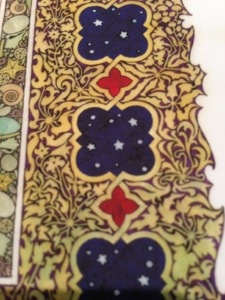
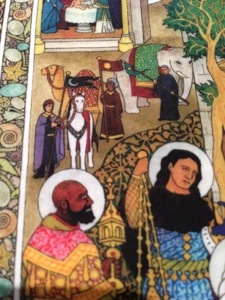
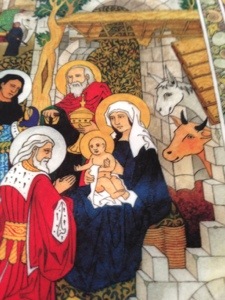

































Love it.
I see Daniel Mitsui features a chasuble design on his site also.
Christmas cards?
It’s so elegant and exquisite! My goodness he is talented!
A gorgeous work. But it brings up the question in my mind about why the infant Jesus is so often unclothed in artwork. He would be cold for one thing and who wants a little one cold, plus anyone who has been around baby boys knows not to leave them without a diaper for long even if it is quite hot. Looking this up online would most likely bring blasphemous stuff I don’t want to see.
Gorgeous. You can see more of Mr. Mitsui’s work in the Advent and Christmas issues of Laudamus Te magazine. laudamus-te.com
It is pretty, but I can’t resist asking whether the magi also had a time machine? It is interesting to see them paying homage in the futuristic garb of Plantagenet nobility.
Yatzer, I think there are many explanations and some discussion elsewhere here, but my understanding was medievals used it to affirm Christ’s full humanity.
Post-Catholic: surely tongue-in-cheek, no?
He has based it on an actual medieval work as shown above, and it was the convention in those times (when knowledge of how people would have looked in antiquity was limited to those who had the remaining bits of antiquity around them i.e. surviving statues and so on – which pretty much meant those in southern Europe) to depict historical scenes in contemporary costume and settings. They genuinely did not know how things would have looked, because of the lack of sources. Therefore in manuscripts and stained glass you’ll see the shepherds looking like 13th century peasants, Roman soldiers looking like they were on the way to Agincourt and Herod dressed like King Henry V complete with plate armour and crown. Very charming, naive even, and Daniel Mitsui has copied this.
Would it be wrong to recommend other Catholic religious artists who have styles different enough from Daniel Mitsui’s so as not to deprive him of income?
The Chicken
Belatedly,
Father, could you supply a more exact reference from the Ven. Bede (he asked lazily…)? I’ve seen the like in 12th-c. Spanish painted sculpture (unless the colour-scheme reflects later re-painting), but am not easily finding earlier references. I also wonder how early it became a part of Epiphany folk practice – the Kings and accompanying costumed and stage-made-up entourages ? (cf. 1956 and 2007 photos here:
es.wikipedia.org/wiki/Reyes_Magos )
yatzwer and LisaP.: “full humanity” is what I’ve heard, too – not so many years ago, an art historian devoted a book to this, but I regret to say cannot find the reference…
jaykay and Post-Catholic: I wonder how consciously ‘anachronistic’ this could sometimes be, given how quickly and strikingly changes in fashions (including technological developments in armour) could sometimes take place. An interesting aspect of it is how the usual Latin work for a knight is ‘miles’, presumably with the result that anyone who encountered a Scriptural ‘miles’ (in the Liturgy or elsewhere) might automatically mentally picture a knight.
Nice massive North Atlantic Kraken! (Imagine the squid rings!)